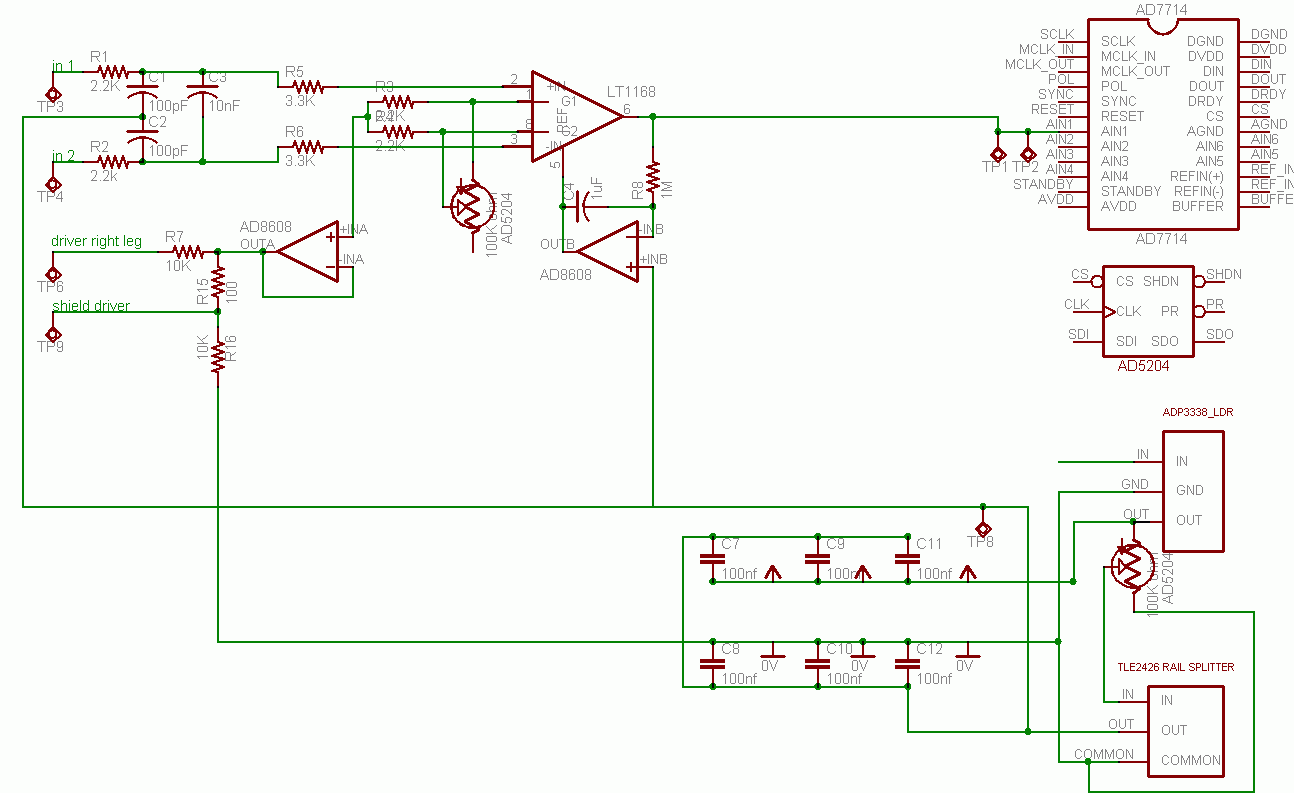Difference between revisions of "Programmable Chip EEG"
| Line 20: | Line 20: | ||
== Discription of How it Works == | == Discription of How it Works == | ||
| + | The daughter signal prossesing board is responcible for filtering and digitising the signals from the body, then the signals are passed to the control board that is the motherboard. The motherboard then can pass the signal to a larger computer. | ||
| + | |||
The differential analog signal is amplified by the instramentation amplifier. Then the signal is amplified and conditioned by high pass and low pass filters. | The differential analog signal is amplified by the instramentation amplifier. Then the signal is amplified and conditioned by high pass and low pass filters. | ||
| Line 26: | Line 28: | ||
Band reject filters may be added soon in the future. | Band reject filters may be added soon in the future. | ||
| − | Then the analog signals are simultaniously digitized and the digital values can be clocked to the | + | Then the analog signals are simultaniously digitized and the digital values can be clocked to the controler motherboard. |
== Parts used in the PCEEG: == | == Parts used in the PCEEG: == | ||
Revision as of 12:24, 25 July 2006
Contents
The Programmable Chip EEG
Welcome to the PCEEG Wiki, where everyone can add to this EEG brain-computer interface!
What it is and what it can be used for
The Programmable Chip EEG is a Modular Multi-channel electroencephalograph that could be used for a brain-computer interface, biofeedback....
The Programmable Chip EEG is programmable because it uses Digitally Programmable Potentiometers. They are used to set the Gain, frequency range, and can calibrate multiple analog boards for different EEG tests.
Status
We currently have a (preliminary?) circuit design and a (prelimary) PCB layout. Eventually, kits could be sold, if there were interest. More info is available at the PCEEG SourceForge home page at PCEEG sourceforge.net.
News
The design is switching to EAGLE CAD, because the auto-router is excellent for open-source productivity. It will allow the design to evolve faster and with less work with a wider selection of PCB production houses to choose from.
Here is a picture of the PCEEG being done in EagleCAD.

The ideas and monkey to robot arm interface by Miguel Nicolelisis very inspiring. He used implanted electrodes to monitor and allow monkeys to control a robot arm as if it was their own. Could the PCEEG do the same with its electrodes on the scalp. Only the future will show.
Discription of How it Works
The daughter signal prossesing board is responcible for filtering and digitising the signals from the body, then the signals are passed to the control board that is the motherboard. The motherboard then can pass the signal to a larger computer.
The differential analog signal is amplified by the instramentation amplifier. Then the signal is amplified and conditioned by high pass and low pass filters.
The common mode signal is inverted summed and sent back to the body to decrese common mode signal thsi is done by the driver right leg circuit.
Band reject filters may be added soon in the future.
Then the analog signals are simultaniously digitized and the digital values can be clocked to the controler motherboard.
Parts used in the PCEEG:
- LT1168 Programmable-Gain Precision Instrumentation Amplifier is used to amplify the weak electric signals coming from the brain through electrodes attached to the scalp, etc.
- Several LT1114 Low Power Precision OP-Amps are used for amplification and filtering of the signal
- The Digitally Programmable Potentiometers AD5204 4-Channel Digitally Controlled Potentiometer is used to make calibration of this device easier. (Historically, a weak point of homebrew designs has been their sensitivity to component value; tolerance and drift have made them require constant tweaking for good results.)
To reduce noise in the readout of the analog part of this circuit, a common-mode feedback is passed back into the body by the driver right leg circuit. Band reject filter may also be used (to reject, for example, 60Hz noise from nearby A/C power wiring).
The analog signal prossesing board will digitise the signal and pass the data to the control board. The control board is based on the AVR_Butterfly which will, further process the signals, and provide an interface to a computer & lcd display.
Open Source Circuit Design
Open Source Circuit Design Think Cycle
Open source (public) results!
PHP will be used to create a database of users and what they sample and choose to share with the open source community.
The database will give statistical analysis on users recordings.
Also the extension of SETI called BIONIC could be used as a distributed library creation of artifacts and data mining.
Please contribute and make the PCEEG a great tool for researching brain computer interfaces.